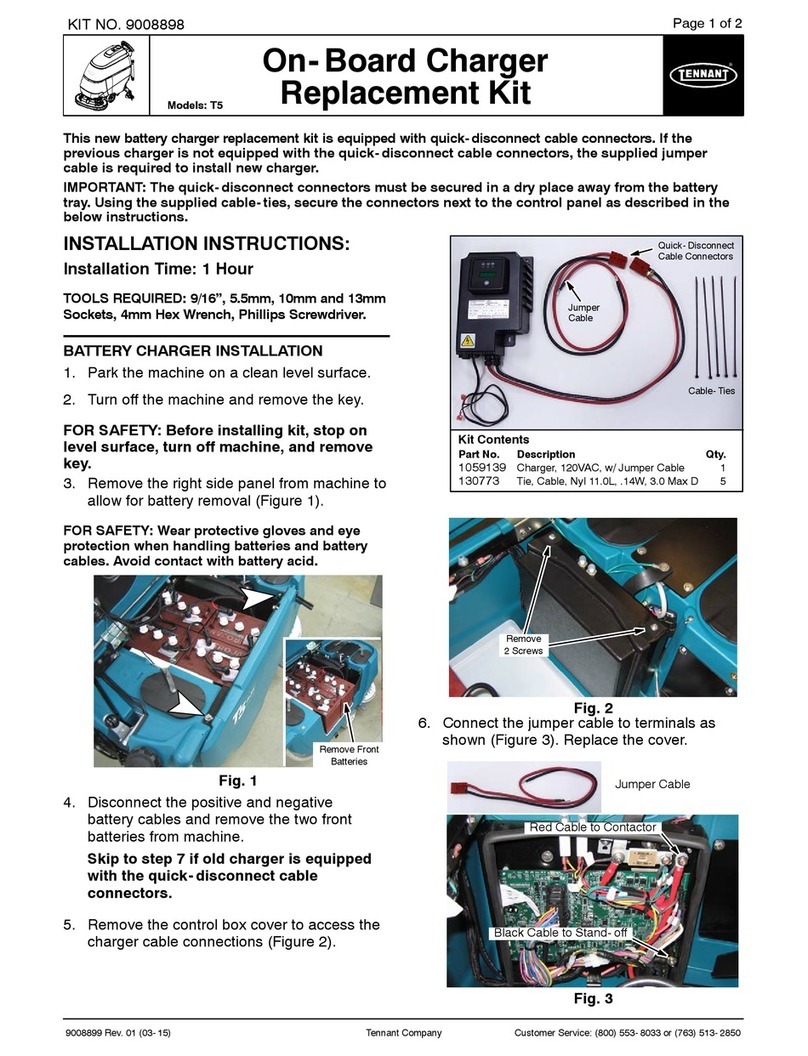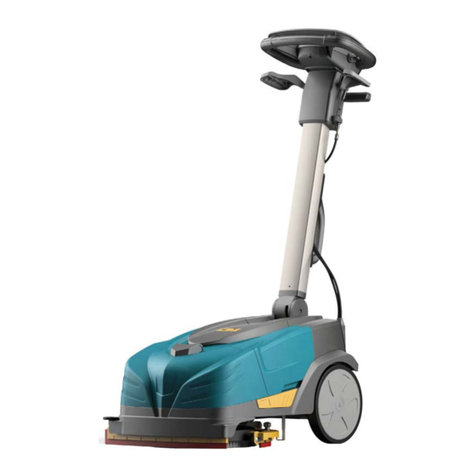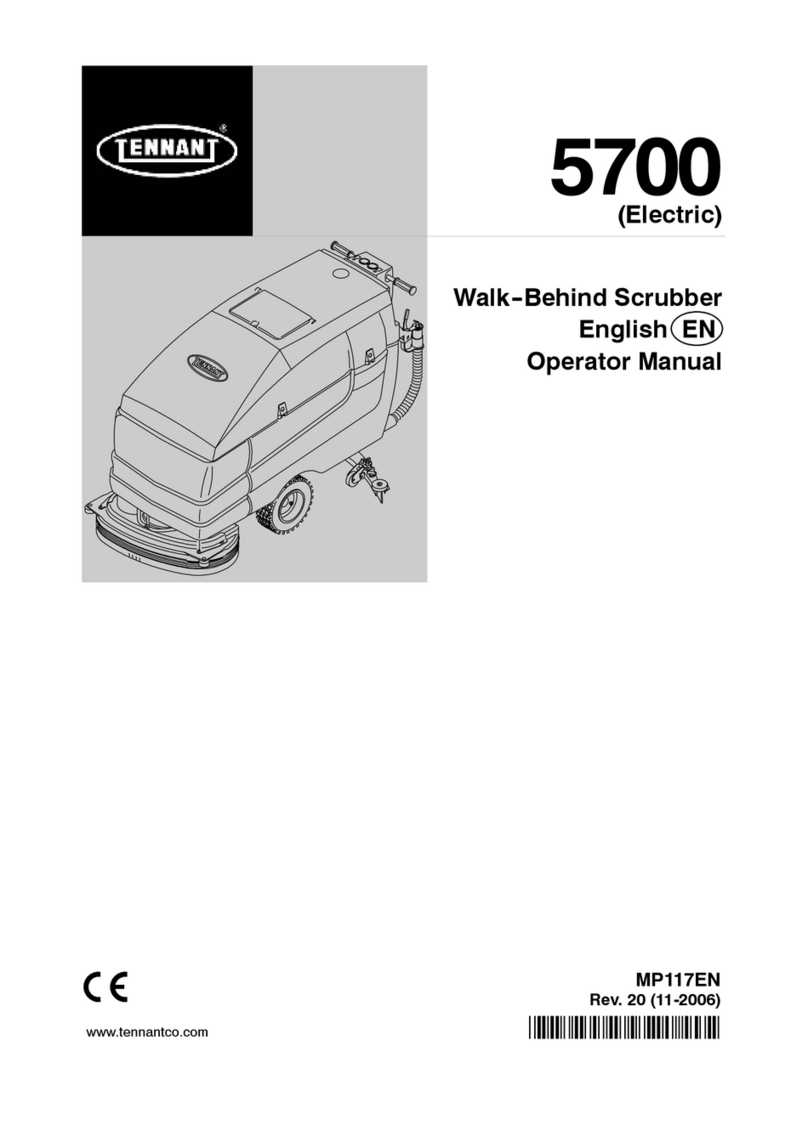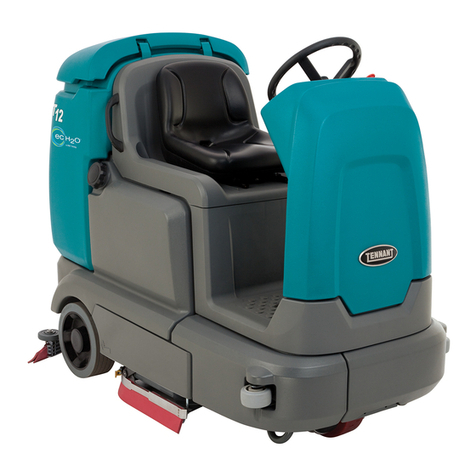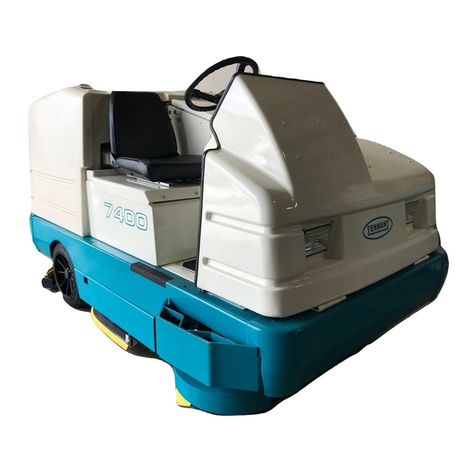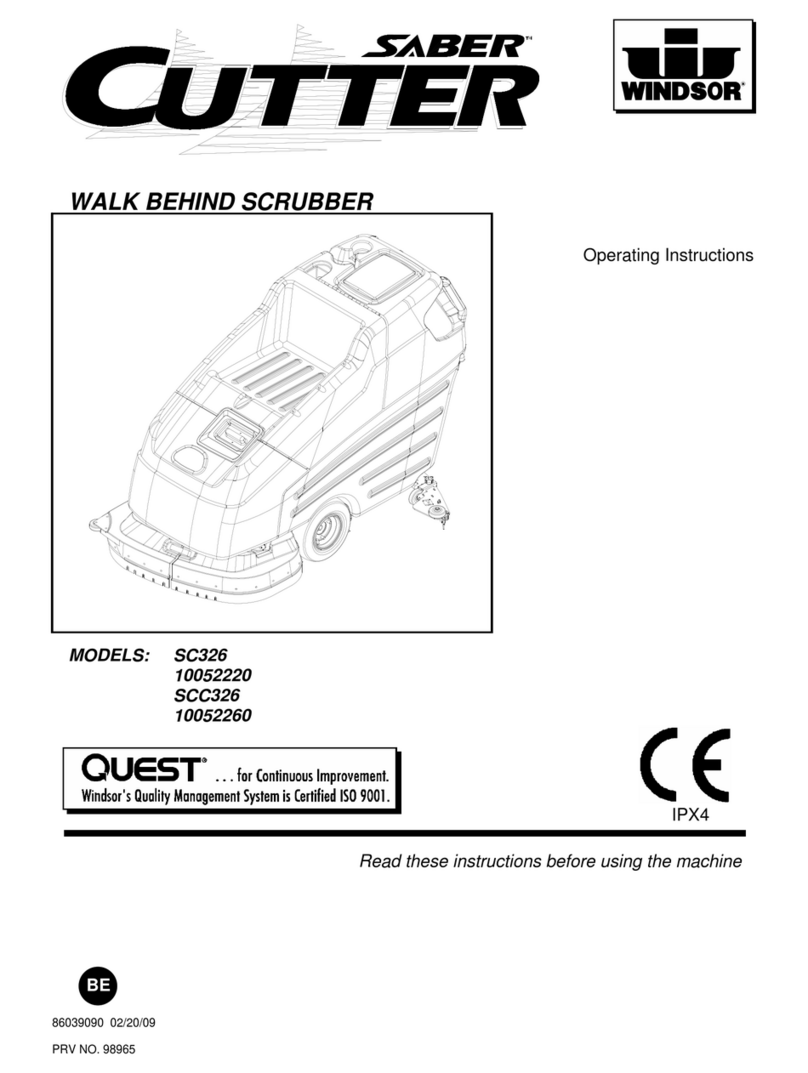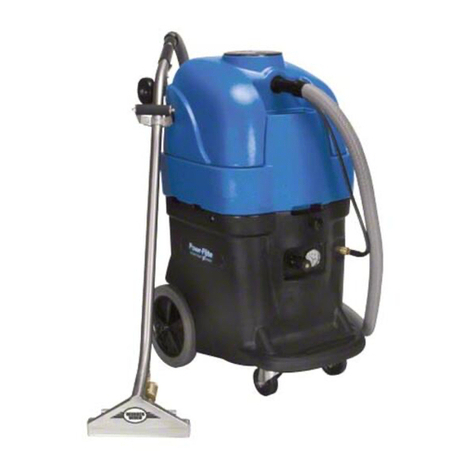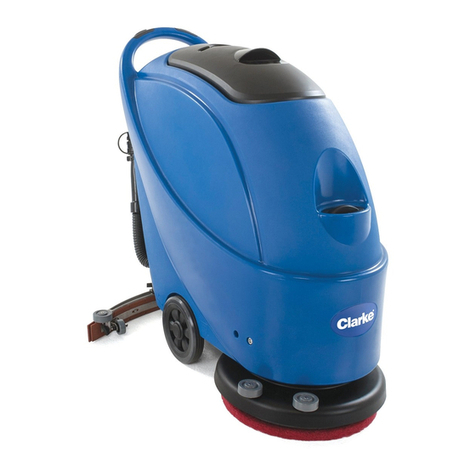
Sub
ect Page
ABRUSH HEAD
A1 MEASURING BRUSH MOTOR CURRENT DRAW 2
A1.1 Measuring brush motor current draw on the CS16 Battery 3
A1.2 Replacing the brush motor’s carbon brushes on the CS16 Battery 5
A1.3 Replacing the brush motor’s carbon brushes on the CS16 Cord 9
A2 REMOVING THE BRUSH MOTOR - BRUSH HEAD 13
A2.1 Removing the brush motor from the CS16 Battery 14
A2,2 Removing the brush motor from the CS16 Cord 18
A2.3 Removing the brush head from the CS16 B and CS16 Cord 19
A2.4 Replacing the brush motor’s thermal protector 21
BSUCTION UNIT - TANKS
B1 SUCTION MOTOR 25
B1.1 Measuring suction motor current draw on the CS16 Battery 26
B1.2 Removing the suction motor from the CS16 Battery 28
B1.3 Replacing the suction motor carbon brushes on the CS16 Battery 30
B1.4 Removing the suction motor from the CS16 Cord 32
B1.5 Replacing the suction motor carbon brushes on the CS16 Cord 33
B2 SQUEEGEE UNIT 35
B2.1 Adjusting the squeegee 36
B2.2 Replacing the squeegee flaps 37
B3 CLEANING FILTERS AND HOSES - TESTING THE SOLENOID VALVE AND FLOAT 41
B3.1 Testing the solenoid valve 42
B3.2 Testing and replacing the solenoid valve on “B” version machines 44
B3.3 Checking the condition of the float 48
B3.4 Cleaning the filters, hoses and solution dispensing cock 49
DINSTRUMENT PANEL/POWER BOARD-BATTERY CHARGER-ELECTRICAL CIRCUIT
D1 INSTRUMENT PANEL BOARD - POWER BOARD 55
D1.1 Replacing the function control card on “B” and “C” version machines 56
D1.2 Testing the function control card on “B” and “C” version machines 59
D1.3 Replacing the power board on “Battery” version machines 62
D1.4 Testing the power control card on “Battery” version machines 66
D1.5 Replacing the power control card on Cord type machines 69
D1.6 Testing the power control card on Cord type machines 73
D2 BATTERY CHARGER 82
D2.1 Replacing the battery charger 83
D2.2 Setting the battery charger charging curve 88
D3 WIRING DIAGRAMS 96
D3.1 Electric wiring diagram for type Battery versions 96
D3.2 Electric wiring diagram for type Cord versions 97
EERROR CODES - TROUBLESHOOTING
E1 DISPLAY OF ERROR CODES 99
E1.1 Error codes for the fuction control card on Battery type machines 99
E2 TROUBLESHOOTING 105
E2.1 Troubleshooting 105
REVISIONS - UPDATES 109
OPTIONS
INDEX
PLDC04626
REVISION 00
March 11, 2022
TECHNICAL OFFICE
Stavale
